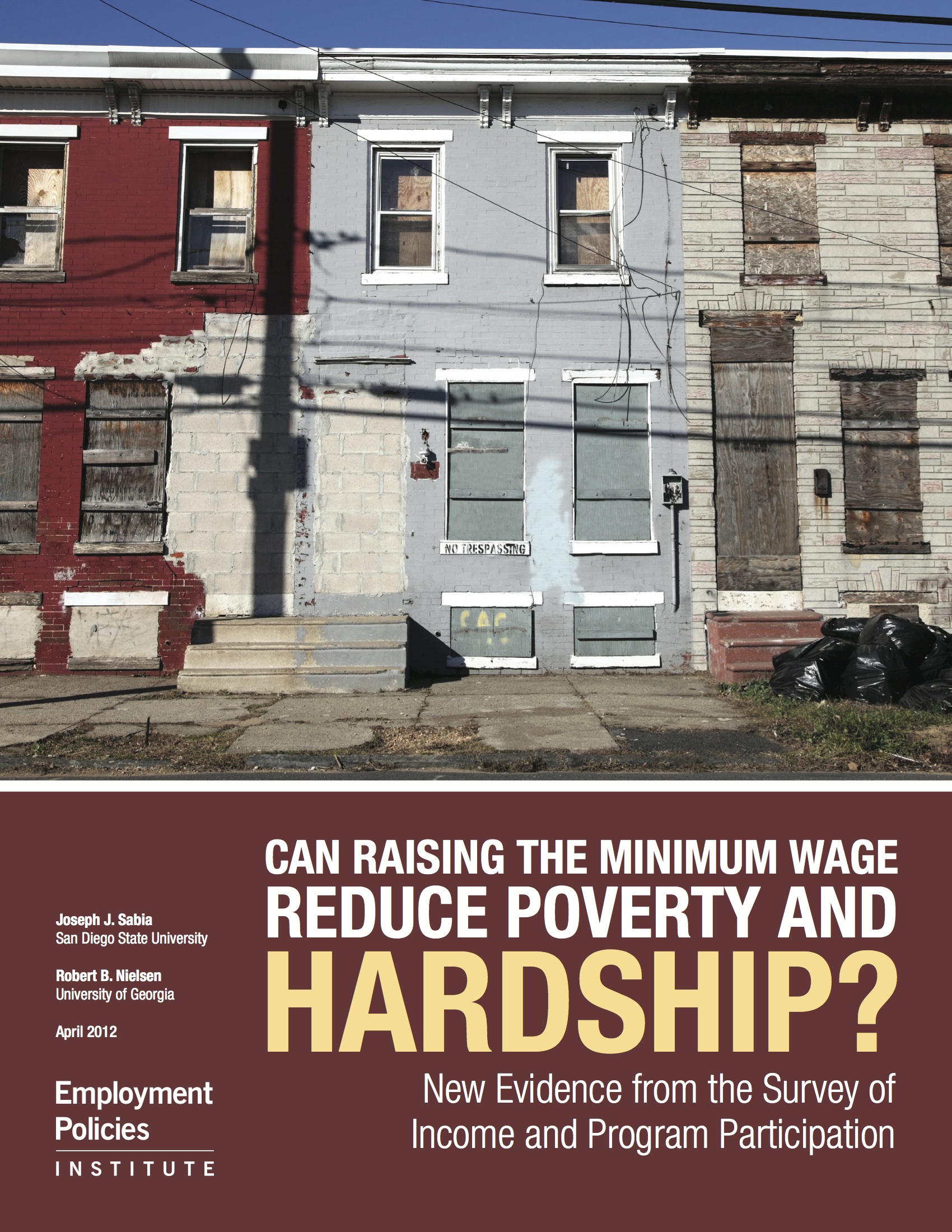Can Raising the Minimum Wage Reduce Poverty and Hardship?
Abstract
In 2011, the Census Bureau reported that the country’s poverty rate was 15.1 percent—the highest rate in nearly 20 years. One policy prescription for this problem is an increase in the federal minimum wage. It’s an intuitive thought: Raise the wages of the lowest paid workers, and poverty rates are sure to fall.
Unfortunately, the empirical evidence hasn’t borne this out. Instead, multiple studies have demonstrated little to no relationship between a higher minimum wage and reductions in poverty.
Economists have identified three confounding factors: First, many people living in poverty don’t work and thus cannot benefit from a higher wage; second, a large number of minimum wage earners are not living in poor families; finally, raising the minimum wage can have the unintended consequence of reducing demand for the least-skilled employees.
But in the debate over the minimum wage, this evidence on poverty is often discarded in favor of powerful claims
about families in hardship. For instance, when then-Senator Obama was campaigning for President, he called for a minimum wage increase so that minimum wage earners can “pay for basic needs such as food, transportation, and housing—things so many people take for granted.”
In this unique study, economists Joseph Sabia of San Diego State University and Robert Nielsen of the University of Georgia endeavor to go beyond poverty rates and measure the impact of a higher minimum wage on various forms of hardship. Using data from the Census Bureau’s Survey of Income and Program Participation, they construct a number of measures of hardship, including the following:
- Financial insecurity: Does the wage earner have difficulty in paying medical or utility bills, or making a mortgage payment?
- Housing insecurity: Has the wage earner missed rent payments in the last year, or do they have un- addressed housing problem like broken windows?
- Health insecurity: Did the wage earner go with- out health insurance, or miss a doctor’s visit?
- Food insecurity: Has the wage earner lacked sufficient resources to purchase food or eat a balanced meal?

